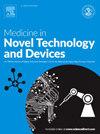GeneXAI: Influential gene identification for breast cancer stages using XAI-based multi-modal framework
Q3 Medicine
引用次数: 0
Abstract
To provide improved treatment prediction and prognosis, analysis of the categorization of cancer stages and important genes in each stage is necessary. The study introduces a GeneXAI multi-modal approach, which classifies the cancer stages and identifies the influential genes by the explainable artificial intelligence models. In the first phase of the GeneXAI, a hybrid optimal feature selection method is applied to extract the imperative features using an early fusion technique. By using the imperative features, the stages of tumor, lymph nodes, and metastasis are identified, and finally, the accurate stage of cancer is classified. In the second phase, XAI such as SHAP and LIME has been utilized to identify the best genes for distinct cancer stages. Moreover, the genomic dataset's top genes were found using SHAP, while crucial genes were found by instance using LIME. Some influential genes such as (PLA2G10, MST1R F13B, and CAMK1) identified by the GeneXAI model, have also been recognized as equally important genes in the state-of-the-art biological models. The model illustrates the process of classifying the influential genes as prognostic or non-prognostic based on their clinical importance. The proposed framework achieves an average 5–7% higher accuracy than other state-of-the-art models by using the early fusion technique of a multi-modal approach.
GeneXAI:使用基于xai的多模态框架鉴定乳腺癌分期的影响基因
为了提供更好的治疗预测和预后,有必要分析癌症分期和每个阶段的重要基因的分类。该研究引入了一种GeneXAI多模式方法,该方法通过可解释的人工智能模型对癌症分期进行分类并识别影响基因。在GeneXAI的第一阶段,采用混合最优特征选择方法,利用早期融合技术提取必要特征。通过命令特征识别肿瘤分期、淋巴结分期、转移分期,最终实现准确的肿瘤分期。在第二阶段,利用SHAP和LIME等XAI来确定不同癌症阶段的最佳基因。此外,使用SHAP找到了基因组数据集的顶级基因,而使用LIME通过实例找到了关键基因。一些有影响力的基因,如(PLA2G10, MST1R F13B,和CAMK1)被GeneXAI模型识别,也被认为是最先进的生物模型中同等重要的基因。该模型说明了根据其临床重要性将影响基因分类为预后或非预后的过程。通过使用多模态方法的早期融合技术,所提出的框架比其他最先进的模型平均高出5-7%的精度。
本文章由计算机程序翻译,如有差异,请以英文原文为准。
求助全文
约1分钟内获得全文
求助全文
来源期刊

Medicine in Novel Technology and Devices
Medicine-Medicine (miscellaneous)
CiteScore
3.00
自引率
0.00%
发文量
74
审稿时长
64 days
 求助内容:
求助内容: 应助结果提醒方式:
应助结果提醒方式:


